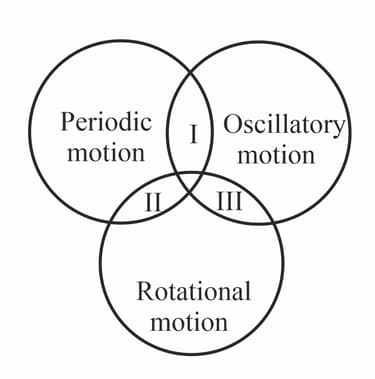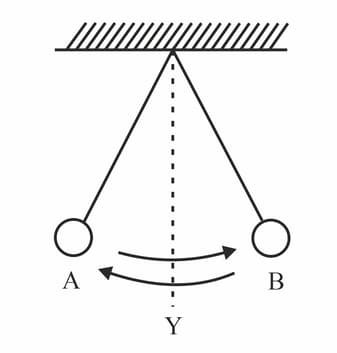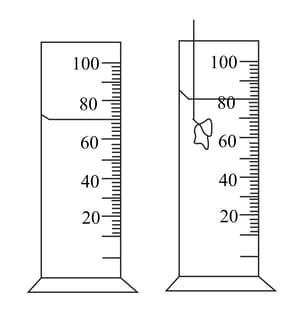Anil Ahlawat Solutions for Chapter: Motion and Measurement of Distances, Exercise 2: EXERCISES
Anil Ahlawat Science Solutions for Exercise - Anil Ahlawat Solutions for Chapter: Motion and Measurement of Distances, Exercise 2: EXERCISES
Attempt the free practice questions on Chapter 6: Motion and Measurement of Distances, Exercise 2: EXERCISES with hints and solutions to strengthen your understanding. NSO Science Olympiad Workbook Grade 6 solutions are prepared by Experienced Embibe Experts.
Questions from Anil Ahlawat Solutions for Chapter: Motion and Measurement of Distances, Exercise 2: EXERCISES with Hints & Solutions
Study the given Venn diagram. Which of the motions described by different bodies are most likely to be I, II and III?

| Option | (I) | (ii) | (iii) |
| A |
Hands of clock |
Motion of moon around the earth |
The blades of a fan |
| B |
Motion of a top cart |
The wheels of a bullock |
Motion of honeybee |
| C |
To and fro motion of a swing |
Hands of a clock |
Motion of a top cart |
| D |
Motion of skin of tabla |
Child playing in a play ground |
A flying bird |
Two identical metal balls A and B moving in opposite directions with different speeds hit each other at point X as shown in the figure.

Changes will most likely appear in their
1. Shapes
2. Speeds
3. Directions
4. Volumes
A pendulum swings backwards and forwards passing through , the middle point of the oscillation.
The first time the pendulum passes through , a stopwatch is started.

The twenty-first time the pendulum pass through , the stopwatch is stopped. The reading is .
What is the time period of the pendulum?
Given figure shows a measuring cylinder (in ) before and after the immersion of an irregular solid object. The volume of the object is

A piece of thread folded times is placed along a long measuring scale as shown in the figure. The length of the thread is between

